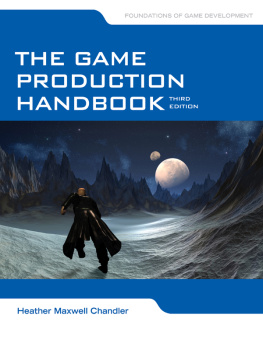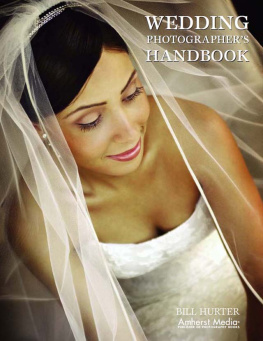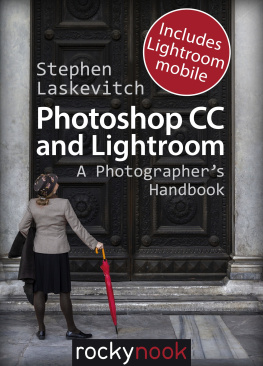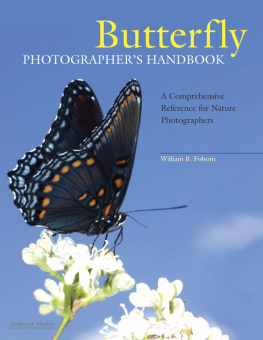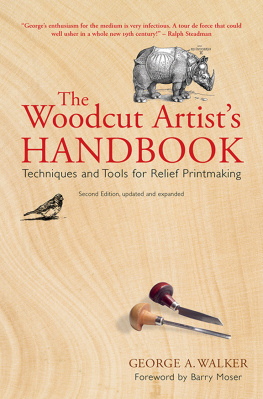The HDRI Handbook 2.0
Due to the competitive price of the book, all electronic versions of the book do NOT include the DVD to the book. If you are interested in the DVD, please purchase the hard copy.
The HDRI Handbook
2.0
High Dynamic Range Imaging
for Photographers and CG Artists
Christian Bloch
Christian Bloch, www.hdrlabs.com
Publisher: Gerhard Rossbach
Editor: Jocelyn Howell
Copyeditor: Judy Flynn
Project Manager: Matthias Rossmanith
Layout: Petra Strauch
Cover Design: Helmut Kraus, www.exclam.de
Cover Photos: Christian Bloch
Printer: Everbest Printing Co. Ltd through Four Colour Print Group, Louisville, Kentucky
Printed in China
ISBN 978-1-937538-16-3
1st Edition 2012
2012 Christian Bloch
Rocky Nook, Inc.
802 E. Cota Street, 3rd Floor
Santa Barbara, CA 93103
www.rockynook.com
Library of Congress Cataloging-in-Publication Data
Bloch, Christian, 1976
[HDRI handbook]
The HDRI handbook 2.0 : high dynamic range imaging for photographers and CG artists / by
Christian Bloch. -- 1st edition.
pages cm
Rev. ed. of: The HDRI handbook / Christian Bloch. 2007.
ISBN 978-1-937538-16-3 (soft cover : alk. paper)
1. Photography--Digital techniques--Handbooks, manuals, etc. 2. Image
processing--Digital techniques--Handbooks, manuals, etc. 3. High dynamic range imaging
-Handbooks, manuals, etc. I. Title.
TR267.B587 2012
777--dc23
2012031746
Distributed by OReilly Media
1005 Gravenstein Highway North
Sebastopol, CA 95472
All product names and services identified throughout this book are trademarks or registered
trademarks of their respective companies. They are used throughout this book in editorial
fashion only. No such uses, or the use of any trade name, are intended to convey endorsement
or other affiliation with the book. No part of the material protected by this copyright notice
may be reproduced or utilized in any form, electronic or mechanical, including photocopying,
recording, or by any information storage and retrieval system, without written permission of
the copyright owner. While reasonable care has been exercised in the preparation of this book,
the publisher and authors assume no responsibility for errors or omissions, or for damages
resulting from the use of the information contained herein.
All photographs, screenshots, example layouts, and illustrations by the author.
This book is printed on acid-free paper.
Foreword
Though one could argue that the image is a human invention, high dynamic range is not. Light spans an enormous range, and our eyes can adapt from the dim level of a starlit night to intense daylight, spanning over eight orders of magnitude (100 million to 1). This is comparable to the energy difference between getting going on a bicycle and taking off in a jumbo jet.
With this kind of range in real-world illumination, how have we gotten by so long with image contrast ratios of less than 100 to 1? The answer is deceptively simple. Although the range of light is enormous, our brain cares most about reflectance, and its range is comparatively modest. In fact, it is very difficult to create a surface that reflects less than 1 percent of the light it receives, and reflectances over 100 percent are forbidden by conservation of energy. Since the brain is trying to figure out surface reflectances based on what it sees, the huge range of illumination is often more of a hindrance to perception than a help. Therefore, an artist who skillfully removes the excess dynamic range in a painting is actually doing your brain a favor, making it easier for you to see what he (or she) sees. Skill and practice are required to accomplish this feat, for a painter who is inexperienced and does not know how to create the illusion of range within the limited reflectances available will create something more like a cartoon than a rendition. Realistic painting techniques were perfected by the Dutch masters during the Renaissance and are little practiced today.
Photography poses a similar problem in a different context. Here, we have the ability to record an image equivalent to that which lands on your retina. Starting from a negative, skill is once again required to render a positive that captures what matters to the brain within the limited reflectances of a black-and-white or color print. For scenes that contain little dynamic range to begin with, nothing needs to be done and the whole process can be automated. For more challenging subjects, such as storm clouds over mountains or the shadowed face of a child in the sunshine, the darkroom technique of dodging and burning is indispensable. With this method, either a round obstructer on a stick is used to dodge overexposed regions or a piece of cardboard with a hole cut out is used to burn underexposed regions during enlargement. This is an arduous, manual process that requires considerable talent and experience to achieve good results. The move to digital cameras has made such exposure adjustments even more difficult due to their limited dynamic range, which is one reason professional photography has been so slow to migrate from film.
High dynamic range imaging (HDRI) enables the centuries-old practices of renowned artists in a new, digital arena. HDRI permits photographers to apply virtual burn-and-dodge techniques in their image editing process, leaving as little or as much to automation as they wish. Digital artists using HDRI are able to create virtual worlds that are as compelling as the real world because the physics of light can be simulated in their full glory. When physically based rendering and image-based lighting are used, HDR photography and virtual scenes and objects may be seamlessly combined. This is common practice for mainstream productions in special effects houses around the world, and even television studios are getting into the act. Enthusiasts, both professional and amateur, are also pushing the envelope, and commercial software, shareware, and freeware are available to assist the transition from a traditional imaging and rendering pipeline to HDRI.
Of course, not everyone needs HDRI. If the starting point is low dynamic range and the ending point is low dynamic range, there is little need for HDR in between. For example, a graphic artist who creates on a digital canvas and prints his work on paper gains no immediate benefit since reflection prints are inherently low dynamic range. It may be easier using existing tools to simply stick to printable colors and create the desired look using a conventional WYSIWYG paradigm. In the long run, even such an artist may enjoy features and effects that HDRI enables, such as lens flare and the like, but these will take time to reach the mainstream. Meanwhile, there is much for the rest of us to explore.
In this book, Christian Bloch introduces the topic of high dynamic range imaging and how it relates to the world of computer graphics, with an emphasis on practical applications. Starting with film photography, Mr. Bloch reexamines the digital image, looking at file formats and software for storing and manipulating HDR images and going on to discuss how such images can be captured using conventional digital cameras. This is followed by a description of tonemapping operators that can transform HDR images into something viewable and printable on conventional devices. Then, a more complete discussion of HDR image editing introduces color in the larger context of illumination rather than simple reflectance. A chapter covering the specialized topic of HDR panorama capture and reconstruction then leads into the final chapter on computer graphics imaging and rendering, describing the techniques that have revolutionized the film industry.


